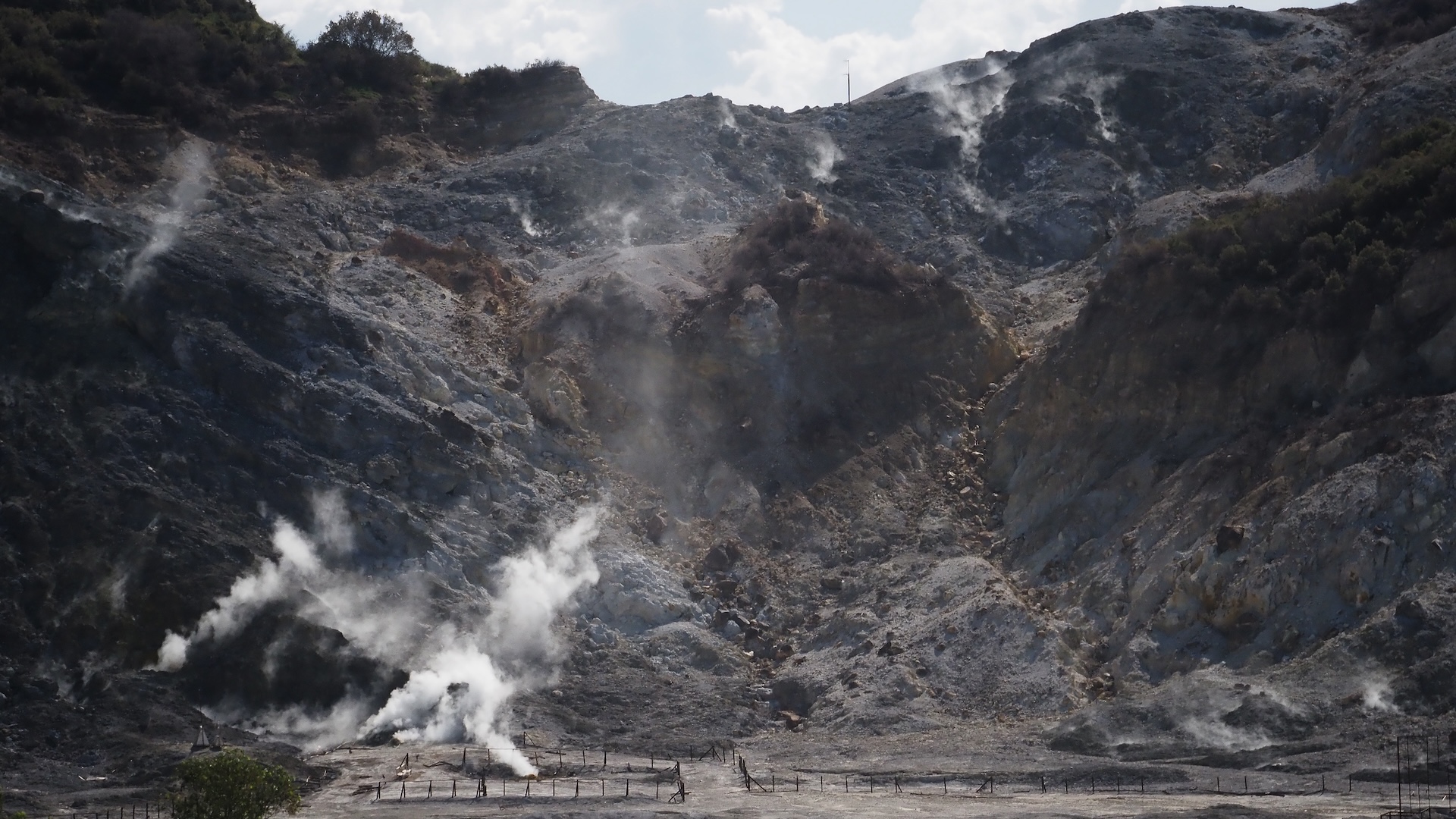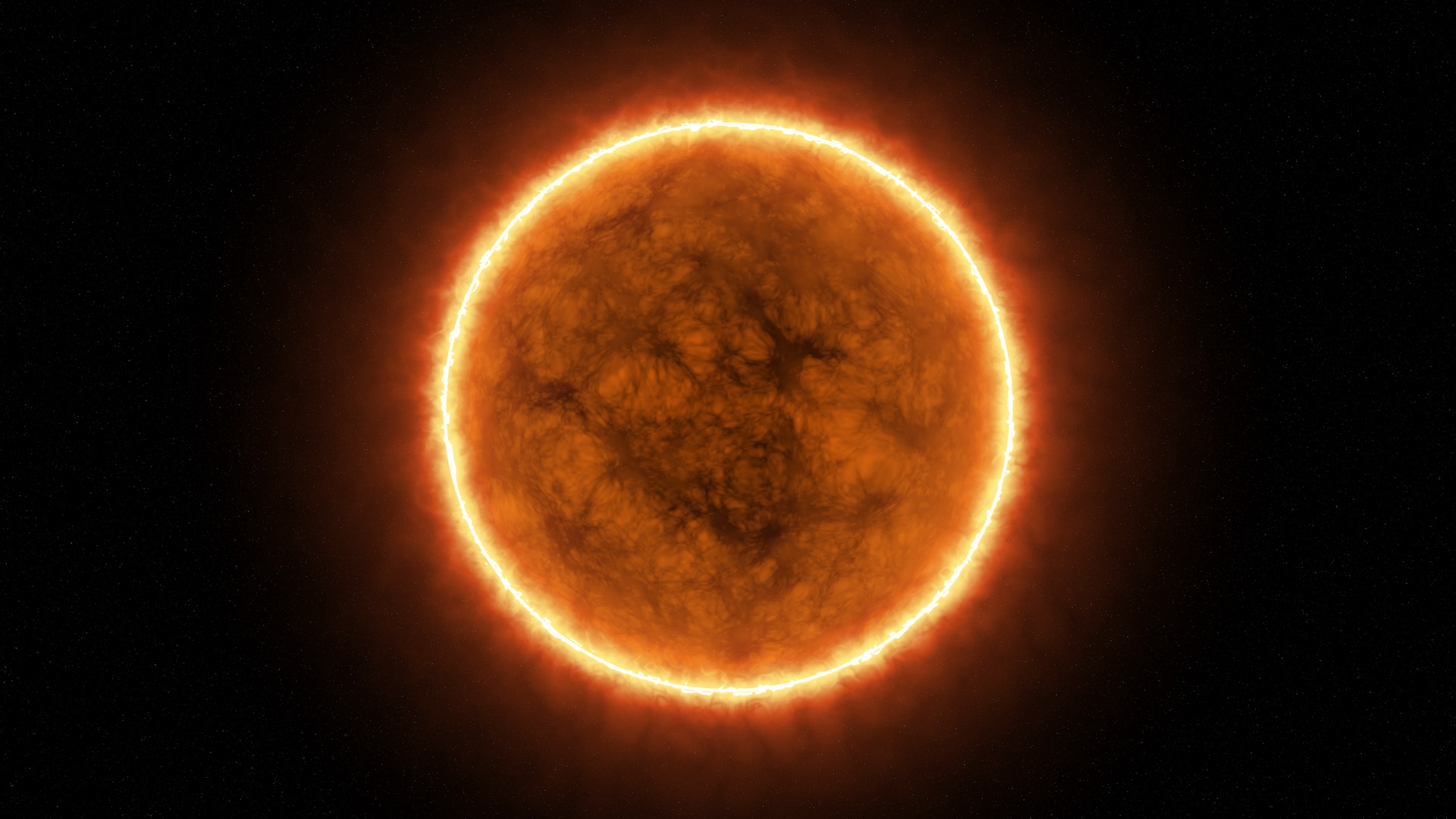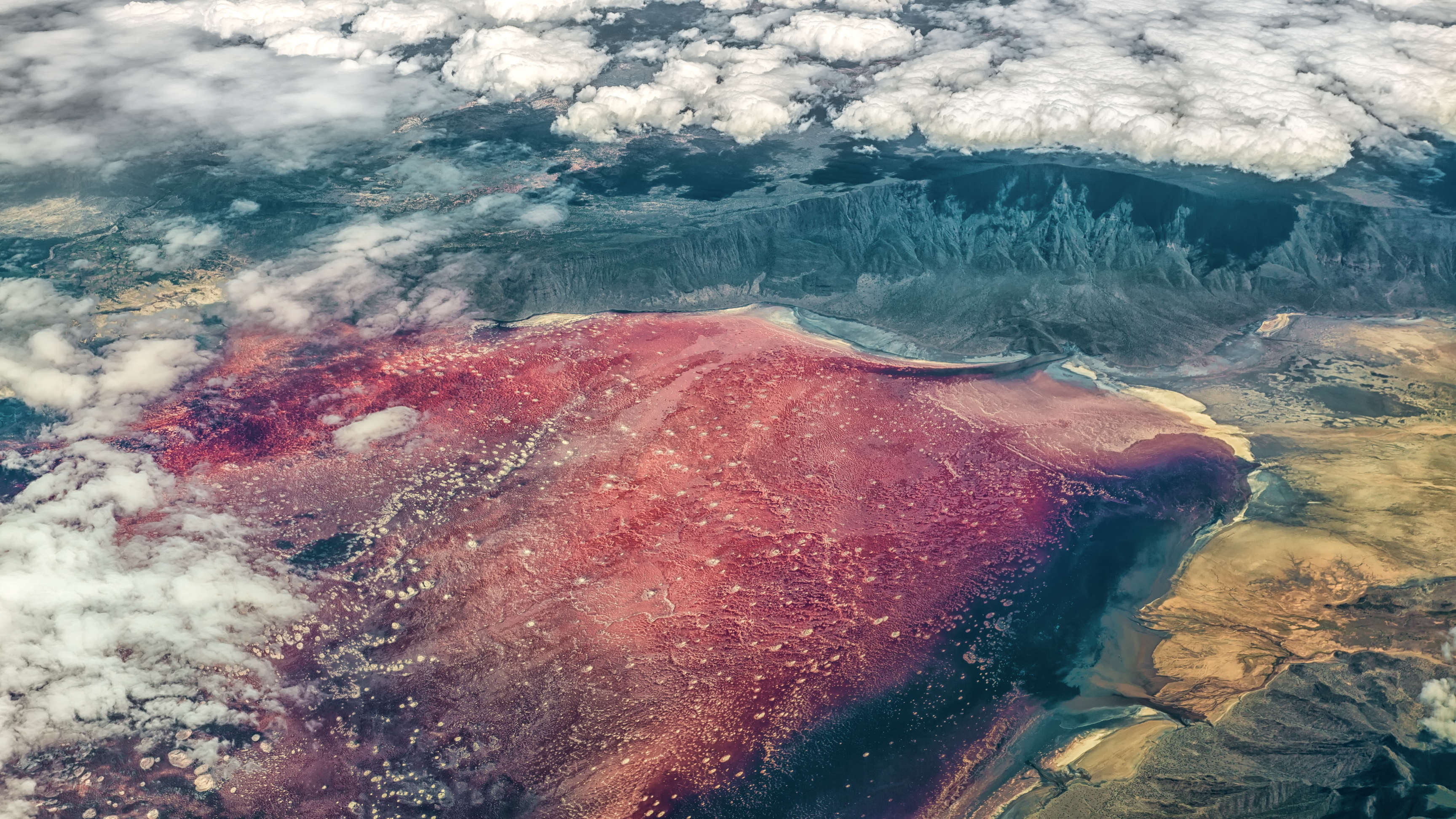A weak layer of crust deep below the floor of Italy’s Campi Flegrei causes the caldera to undergo periods of earth-trembling unrest, new research has found.
According to the new study, published April 5 in the journal AGU Advances, this layer sits between 1.8 and 2.5 miles (3 to 4 kilometers) deep. It is made of a rock called tuff, which has been weakened by multiple magma intrusions over tens of thousands of years.
This tuff, a light rock made of compressed volcanic ash, acts like a sponge for volcanic gases rising from the magma chamber that sits at least 7.5 miles (12 km) below the surface. When these gases begin to saturate the pores in the tuff, they cause the rock to deform and even break, creating earthquakes. This finding could explain the source of Campi Flegrei’s regular restless periods, said study leader Lucia Pappalardo, senior researcher at the National Institute of Geophysics and Volcanology in Italy (INGV).
“Other calderas in the world are characterized by this phenomenon,” Pappalardo told Live Science, “[so] we think our model can be extended to other calderas worldwide.”
The research is part of a larger project with the aim of better forecasting eruptions at Campi Flegrei, which is also known as the Phlegraean Fields and sits west of Naples. Roughly 500,000 people live in an area that would be swamped by boiling pyroclastic flows of hot ash and gas in the event of a caldera eruption, according to Italy’s Civil Protection Department.
Campi Flegrei has been erupting for at least 47,000 years and last erupted in 1538. But it undergoes periods of significant unrest, one of which has been ongoing since 2005. During these restless periods, the region shakes with frequent, mostly small, earthquakes. One of these minor quakes caused a wall to collapse at the historic site of Pompeii on Thursday (June 5), according to news reports.
Pappalardo and her team wanted to understand how the structure and strength of the rocks under the caldera contribute to the volcanic activity. They used rocks drilled decades ago from deep below the caldera’s center , subjecting them to a bevy of scientific analysis.
They characterized the minerals and elements in the samples and also subjected them to a process called “4D computed X-ray microtomography,” which allowed them to observe the structure of the rock samples while they were being compressed until they cracked. This provided information about the rocks’ strength and mechanics, study co-author and INGV researcher Gianmarco Buono told Live Science.
As the researchers conducted these tests on samples from different layers of rocks, they discovered the weak tuff layer. “This was unexpected,” Pappalardo said. Using computer modeling, the researchers discovered that this layer has likely trapped numerous magma intrusions, or dykes, over the millennia. These intrusions heated and deformed the rock, weakening it.
The researchers are now working to understand the ways that material from the caldera’s deep magma chamber can rise to the surface, causing an eruption. But despite the caldera’s frequent shuddering, there is no indication that a major eruption is imminent, Pappalardo said.
“At the moment, our monitoring system is not registering any parameters that can suggest magma movement,” she said. “So the eruption cannot be in a short time.”














